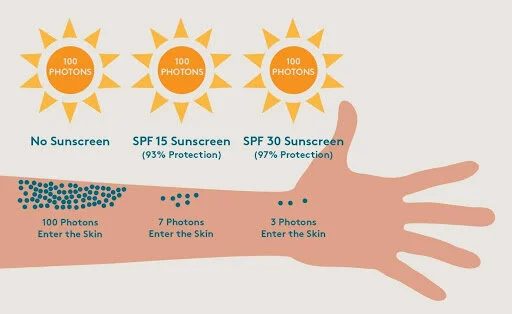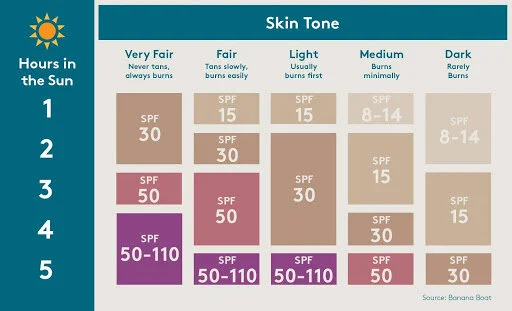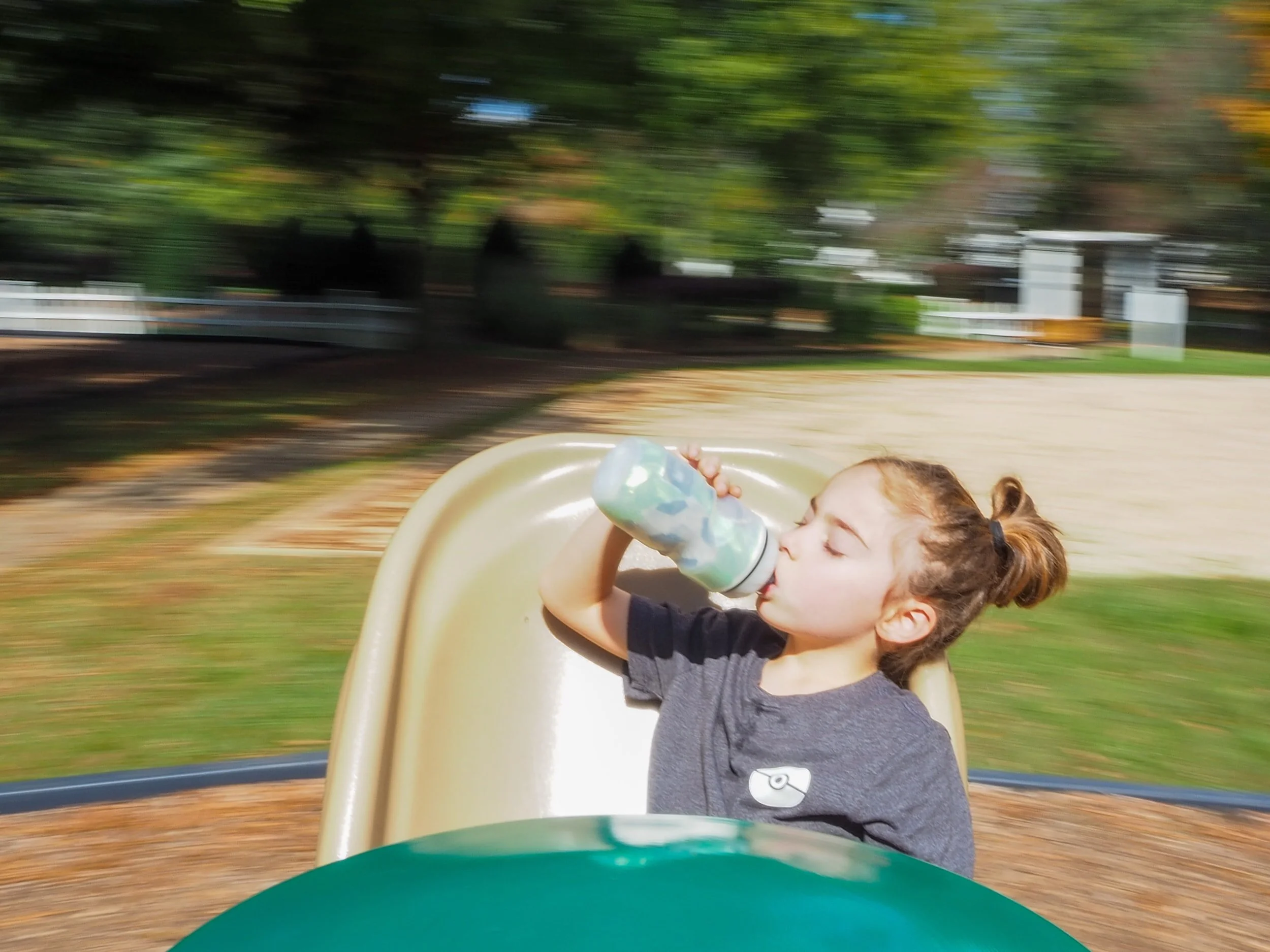Parenting Q & A | Sun protection & water safety for children with Dr. Christina McDonnell
It is that time of year again where we are enjoying the longer days of sunshine, brighter evenings and warmer temperatures. While many of us will remain in Ireland this year, regardless sun protection and water safety are top of the list this summer for both adults and children.
So when I was considering this very topic as my next guest Q&A blog, I was thrilled that Dr Christina Mc Donnell agreed to highlight so many important factors when it comes to our skin and keeping our children safe around water. She is an absolute fountain of knowledge so I’m very grateful for all that she has shared in this expert blog.
Dr. Christina Mc Donnell MB Bch BAO MICGP, is a mum and a qualified GP, based in Co. Clare. She graduated with a first class honours degree in medicine. Her areas of special interest include paediatrics, dermatology, women’s health and mental health. Christina has a number of other roles in terms of her profession, one of which is being appointed as the Medical Practitioner for An Garda Siochána locally.
Christina is well known for her amazing fundraising for Crumlin and Temple Street Hospitals by selling beautiful children’s books. Due to its phenomenal success, she has continued to work hard on this initiative raising thousands of euro for the aforementioned charities, as well as fundraised for hundreds of books for children in hospital. See her website to purchase books here
Sun Protection & Water Safety Tips for Summer
During the Q&A session we spoke about, click on the section you wish to jump too;
The facts on how sun cream works and how often should we apply them for adults and children?
The difference between heatstroke and sunstroke and how to treat it
Dehydration
Water safety tips
To begin the Q & A Christina noted; SPF is a hot topic in the beauty industry these days and, truthfully, in terms of attempting to slow down the ageing process there is nothing more effective than SPF. Applying expensive face creams without using SPF daily is like putting fresh paint on a cracked wall.
In most cases, SPF products are aimed at women but it’s use is of equal importance in men, and even more so in children. More significantly, we know that repeated sun-damage to skin can lead to skin cancer. Melanoma is the fourth most common cancer in Ireland and the number of deaths from it have been steadily increasing over the past 20 years. Non-melanoma skin cancers (e.g. BCC basal cell carcinoma and SCC squamous cell carcinoma) affect 1 in 6 men and 1 in 9 women over their lifetime too. SPF is our only armour in its prevention for ourselves and our children.
How do sun creams work and how often should we apply them for adults and children?
1. Suncream works by combining organic and inorganic active ingredients that protect the skin against the sun’s rays. There are two types - physical and chemical.
Physical suncream, also called “mineral” sunscreen, contains inorganic physical UV filters that reflect back, and therefore block, the sun’s rays before they penetrate the skin. These active mineral ingredients (either titanium dioxide and/or zinc oxide), are designed to sit on top of the epidermis rather than be absorbed into the skin.
Chemical suncream functions in a different manner as it contains organic active ingredients designed to absorb UV radiation upon contact. A chemical reaction occurs that transforms UV rays into heat, which is then released from the skin.
While physical UV filters block both UVA and UVB rays, chemical UV filters often only protect against one or the other.
Ultraviolet A (UVA) has a longer wavelength and is associated with skin aging.
Ultraviolet B (UVB) has a shorter wavelength and is associated with skin burning.
2. To determine how often suncream needs to be applied, you first have to understand it’s ratings. SPF stands for Sun Protection Factor, and this measurement indicates how well and for how long your sunscreen will protect your skin from the sun’s UVB radiation, unlike PA ratings, which measure a product’s level of protection from UVA radiation.
This chart shows that no suncream allows 100 photons of radiation to enter skin. In the case of SPF15 suncream, which offers 93 percent protection from the sun’s rays, only 7 of those photons penetrate the skin. Furthermore, using SPF30 suncream, which protects against 97 percent of the sun’s rays, only three photons would penetrate skin.
Another factor that determines how long SPF protects skin from UV radiation is skin photosensitivity, which is related to one’s skin tone. A person with very fair skin should wear at least SPF30 anytime they are outdoors, whether they’re spending 15 minutes or two hours exposed to the sun’s rays. However, to protect their skin from three or four hours of sun exposure, they’d need to apply SPF50. In contrast, a person with very dark skin is less likely to burn and may require only SPF15 to protect their skin for up to four hours. The chart below further details the effectiveness of SPF ratings for different skin tones.
Of note this chart also indirectly indicates skin cancer risk in that ‘very fair’ skin is at highest risk of skin cancer, with the risk reducing and being the lowest in ‘dark’ skin.
Regarding how often to apply suncream to children and adults – skin does lose ability to repair itself with ageing however, more importantly, young skin is very photosensitive and we know that repeated sunburn in childhood increases the risk of skin cancer in later life. I don’t differentiate between adults and children in terms of my advice – I recommend that everyone apply suncream about 15 to 30 minutes before going outside and then reapply every two hours while outdoors (more often if sweating or after swimming).
Although a lot of products are water resistant, should we still apply them at the same time intervals?
It is very important to remember that sweating or water can remove sun protection, requiring it to be reapplied immediately after. ‘Water resistant’ does mean it is less likely to wash off but it cannot be relied upon and still needs to be reapplied at the time intervals previously mentioned. It is also imperative to remember that approximately 90% of harmful UV rays can also pass through light cloud too, meaning that sun protection should technically be applied every day, not just on ‘sunny’ days. It is the UV radiation from the sun, not heat, that is the major cause of sunburn, premature ageing, eye damage and skin damage leading to skin cancer.
In recent years, with growing interest in beauty and skin care, adults are constantly reminded to apply SPF to reduce skin damage and ageing but applying sun cream to children’s skin on non-sunny days is practically never mentioned. As discussed, the sun’s UV radiation is still a significant issue in all weather, as well as on warm days, so SPF is recommended for use every day. In reality it is of course a challenge for parents to add this to a child’s busy daily routine so the main focus tends to be to apply it well and often on sunny/hot days and then on the other days if it is possible.
I really believe that children comply better with most things when they understand what is going on. My little one, at the age of two, now asks for suncream most days before we leave the house. She sees it as being on par with putting on shoes and a hat. She can actually say ‘protect your skin from the sun’ now and points up to the sky.
Top Tip
Something I find very effective when it comes to applying suncream for toddlers and young children is to use a make-up brush or make-up applicator sponge. It is easier to apply and children usually find humour in having their face ‘painted’ so tend to be more agreeable than if it is applied by a parent’s hand.
Daily sun protection should technically be considered as important as brushing your teeth. It can be hard to remember it every day but leaving it beside your toothpaste or your keys could serve as a helpful reminder. Premature skin ageing, and certainly skin cancer are not things anyone wants to deal with, especially in cases where they can be prevented.
Do you recommend that all children should wear Factor 50 and do you recommend anything else to protect children from sun damage?
SPF 50 is recommended for use on children according to national guidelines. Interestingly though, SPF 50 offers only marginally better protection from UV radiation than SPF 30, filtering out 98 percent of UV radiation compared to 96.7 percent blocked by SPF 30.
SPF50 suncream still needs to be applied liberally, reapplied every two hours (or after swimming, exercising and towel drying) and used in combination with other sun protection measures (detailed further below).
Areas to watch out for
In the context of suncream application, areas that are commonly missed include tops of ears, scalp (especially in the case of babies or older individuals with light or thinning hair), lips (adults should use a lip balm with SPF), eyelids, neck, feet/ankles and hands so it is important to apply it to all sun-exposed areas of the body.
Eye Protection
I will also take this opportunity to emphasise the importance of adequate eye protection from the sun’s harmful rays. With my daughter, I kept her in shade away from direct sunlight until she was 6 months old, in keeping with national guidelines, but I began putting sunglasses on her when we were in the sun thereafter. She became used to them very quickly and continues to wear them happily now when it is sunny outdoors. My rule of thumb is that if I feel the need to wear sunglasses then I give her her’s to put on too. Too often I see parents wearing sunglasses and their babies squinting and blinded by the dazzling sun. It isn’t deliberate, it is just something that is never really mentioned to parents and you rarely see babies/young children with sunglasses on when out and about. It is really something that needs to change in my opinion as excess sunlight can cause cataracts in later life. Young eyes are very sensitive and need to last a lifetime. The main consideration to bear in mind when purchasing sunglasses for adults and children is that they are UVA and UVB protective, as close as possible to 100%.
Types of Suncream
As mentioned, children aged under 6 months should be kept out of direct, strong sunlight and therefore should not require suncream. An SPF 50 mineral/physical suncream is recommended from 6 months to 6 years old (they are less irritating to sensitive skin than chemical suncream). It should be ‘broad-spectrum’ meaning that it protects against UVA and UVB radiation. I would opt for a ‘water-resistant’ variety but still reapply it after swimming, and at least 2-hourly on sunny days. From 6 years and above SPF 30 is acceptable, again with 2-hourly reapplication.
What to wear
Simple measures of equal importance include – light, long sleeved tops (with suncream on hands), trousers with long legs (with suncream on ankles and feet if exposed), wide-brimmed hats (with suncream on face) and sitting in the shade where possible.
Vitamin D
One final thing I would like to mention on the subject of SPF is vitamin D. Vitamin D is an essential, fat-soluble vitamin which promotes calcium absorption in the gut, maintains adequate serum calcium and phosphate concentrations to enable normal bone mineralisation, plays an important role in immunity, helps with mood regulation, etc. One could write a book on it’s functions in the body but the main thing to consider is that it is produced by the skin when UV rays from sunlight strike the skin and trigger it’s synthesis. So if we are blocking UV radiation from our skin we are blocking vitamin D production. Vitamin D is present in very few foods naturally, and only in small amounts, therefore we must take it as a supplement or in foods that have been fortified with it.
The HSE recommends:
‘Children aged 1 to 4 need a vitamin D supplement every day for a few months each year. Give this from Halloween (October 31st) to St Patrick’s Day (March 17th).
Babies under 12 months need vitamin D supplements every day if they are:
breastfed
have less than 300mls or 10 fluid oz (ounces) of infant formula a day.’
Many people (every parent I have ever met) take this to mean that you stop giving vitamin D supplements to children when they reach the age of one. This is absolutely not the case. Again, the HSE states that ‘research shows that most young children in Ireland get enough vitamin D in the summer.’
However if a child wears SPF year round, as guidelines also suggest, then their vitamin D production is inhibited and they need year round vitamin D supplementation to avoid deficiency.
Is there a difference between sun stroke & heat stroke?
These two terms refer to the same condition. There is a difference between heat exhaustion and heat stroke however. The former refers to a precursor state where a child becomes too hot and their fluid intake is not adequate. Children sweat less than adults and have a poorer ability to control and maintain optimal body temperature. Heat exhaustion can rapidly progress to become a condition called heat stroke, which is a life-threatening emergency. In severe cases, the temperature can rise to the point of causing brain injury, organ failure and death. These conditions can occur indoors as well as outdoors. Some notable cases have occurred in cars. Children should never be left in parked cars, even with the window open as temperatures can rise by 10 degrees in just 10 minutes. Light, loose clothing, air-conditioning/fans, cold drinks and ice-pops, and paddling safely in cool water can also all help to cool the body down in hot weather.
Signs of heat exhaustion
The signs of heat exhaustion in children can include:
Intense thirst
Weakness or fainting
Cramps in the arms, legs or stomach
No appetite, feeling sick or vomiting
Irritability or being cranky
Headache
Sweating a lot
Pale clammy skin
Temperature of more than 38 degrees (but less than 40 degrees)
If a parent or child suffers from either – what is the ideal treatment?
Treatment for heatstroke
Bring the child to rest in a cool place, ideally in a room with air conditioning, or at least somewhere that is in the shade.
Give plenty of fluids to drink. This should either be water or an isotonic drink.
Undress the patient and sponge with cool water.
Call an ambulance if there is no improvement after 30 minutes or in the case of severe headache, rising temperature, rapid breathing, shortness of breath, confusion, seizure or loss of consciousness.
As mentioned, heat exhaustion occurs when the body cannot cool itself adequately. Dehydration, in the context of heat-related illnesses, occurs when the body loses excess water as a result of sweating.
Symptoms of Dehydration
The following are the most common symptoms of dehydration. However, each individual may experience symptoms differently.
Thirst
Less-frequent urination
Dry skin
Fatigue
Light-headedness
Dizziness
Confusion
Dry mouth and lips
Increased heart rate and breathing
In children, additional symptoms may include:
Dry mouth and tongue
No tears when crying
No wet diapers for several hours
Sunken abdomen, eyes, or cheeks
Listlessness
Irritability
Skin that does not flatten when pinched and released
Other than drinking fluids to help, is there anything else an adult/child can do to treat and relieve it straight away?
In cases of mild dehydration, simple rehydration is recommended by drinking fluids. Many isotonic drinks on the market effectively restore body fluids, electrolytes, and salt balance.
For moderate dehydration, intravenous (IV) fluids may be needed. In the early stages, simple rehydration may be effective. Cases of severe dehydration should be treated as a medical emergency, and hospitalisation, along with intravenous fluids, is necessary.
As with everything in medicine, prevention is better than cure so focusing on keeping children adequately hydrated, particularly in hot weather, is crucial. I always leave water bottles in several locations around the house (accessible at the level of a child’s height and in a bottle that they can use themselves), always bring one with us on outings, in the car, buggy etc. Children will most likely drink more If it is freely available than if they have to go out of their way to request a drink. That said, oftentimes they can be so busy that they forget to drink too so it is important for parents to offer drinks to ensure adequate fluid intake.
Water Safety
We are now at that time of year where children of all ages are swimming – do you have any water safety tips?
According to the annual WHO report, more than 140,000 children under the age of 15 years died in 2012 as a result of drowning worldwide. This makes drowning the leading cause of accidental death in this age group. Infants die most commonly in bathtubs, older children die in private swimming pools, garden ponds and other inland waterways. It is estimated that up to 80% of drowning incidents are preventable. A devastating fact for so many parents and families.
My number one water safety tip is to get babies and children familiar with water from a young age. I brought my little girl to Water Babies classes from 12 weeks old, so she was very comfortable in the water from a young age. Unfortunately, the classes could not continue due to COVID-19 regulations but I felt that the benefit was huge after only a few months. One of the aims of the classes was to teach young children how to react if they fell into water for example and how to swim to safety. I couldn’t recommend classes like these highly enough and I can’t wait to get back to them!
It is also worth contacting your local swimming pool to see what classes are available for older children too. Teaching a child to swim is giving them a gift that will serve them throughout their lives.
Other general tips are to always stay within arms reach of children in water, to ensure that armbands and other buoyancy aids are CE approved and to wear lifejackets on a boat. When I am near a river I always take a mental note of where the nearest ring buoy is stationed. Not just in terms of water-safety, but in general terms, it is also extremely important to know where the nearest AED (automated external defibrillator) is located.
In the garden always empty or safely cover anything that can collect water including barrels, water troughs, buckets, basins and ponds. Supervision at all times is paramount – a child can drown in a paddling pool or even a puddle if left unsupervised even briefly.
Everybody stays with their children as they bathe but parents often come and go from the bathroom as the bath is being filled. A child could drown (or suffer burns if the water is too hot) if they were to climb into the bath unsupervised. Bath water should also be drained immediately after use.
Bath seats are very helpful to parents but not recommended by national guidelines. They can tip over and hold a child under the water. If they are being used it must be done with constant supervision.
I realise that this is fear evoking but there is no room for complacency when it comes to children and water safety.
www.watersafety.ie is a fantastic resource for more on water safety.
If a child or adult gets into difficulty in the water – what is the best thing to do to help?
The first priority is to move the victim from the water as quickly as possible, without risk to the rescuer, in order to allow cardiopulmonary resuscitation and ABC stabilisation to take place without delay while awaiting the arrival of trained paramedics.
It is really important for adults to consider their own swimming ability too. If a person cannot swim they either cannot assist or could get into great difficulty themselves by trying to. One may not realise the value of that training until they are in a situation where those skills can mean the difference between life and death. I know that many people have a strong fear of water but you can find basic classes close to your location on www.watersafety.ie.
Another excellent resource on Instagram for practical first aid advice and all things safety is @firstaidforeveryone on Instagram. I really think doing a first aid course is crucial, ideally before having children. I believe it should be taught alongside pre-natal classes but, that said, it is absolutely never too late to learn some first aid skills or to refresh those previously learned.
TAKE HOME POINTS
Keep babies out of direct sunlight until over the age of 6 months old. Use SPF 50 suncream thereafter until at least 6 years old.
Use adequate eye protection from the sun’s harmful rays – sunglasses should be close to 100% UVA and UVB protective.
Wide brimmed hats, long sleeved loose tops, light trousers with long legs, spend time in the shade.
Vitamin D supplementation is essential.
Ensure adequate fluid intake, particularly in hot weather.
Do a first aid course.
Learn to swim and teach children to swim from a young age.
Be aware of drowning hazards in and outside of the home.
More info about Christina
Following Christina’s graduation from medical school, she then completed her intern year in medicine and surgery and progressed to the Mid-West Specialist Training Scheme in General Practice, where she completed a further 4 years of training, both in the hospital and GP setting, to qualify as a GP.
I am delighted to have been asked to part-take in this Q+A. I have not shared much about my career on social media to date but I do hope to expand more on it over time. I am really pleased to write on the topics of sun protection and water safety as I am very passionate about both. I spent much of my youth in the water, training as a lifeguard and spent years with the Civil Defence learning first aid, among many other things, prior to my medical career.
As a parent myself, it’s that constant reminder to make sure the kids have sun cream on, are drinking plenty of water and of course are being careful when playing near water, and of course this just doesn’t apply to the summer months how and ever, Christina has certainly given me food for thought and so much knowledge to be mindful of. Here’s to a safe, sunny and happy summer ahead.
If you are feeling overwhelmed or facing challenges with your children, I am here to help, I offer tailored 1 to 1 parent support sessions and corporate parenting talks. Get in touch with me today at aoife@parentsupport.ie or if you are interested in creating a happier and calmer home I offer a Video Based Positive Parenting eLearning Course.





